Monday, September 12, 2022
Search ended well
Air Greenland's hoist operator, Dolfi Lund, had to take a walk in the sea to hoist a man onto the rescue helicopter. Get an insight into one of the many searches Air Greenland is involved in, which in this case ended well.
We have been given permission to report on a rescue operation by agreement with Arctic Command, which is responsible for coordinating the Search and Rescue response together with the Greenland Police. Air Greenland's rescue helicopter H225 is part of the response and is based in Kangerlussuaq. It is manned around the clock by two pilots and two hoist operators who work in shifts. There are a total of 9 pilots, 8 hoist operators and 2 technicians assigned to H225.
On Monday 5 September at 05:57, Air Greenland's rescue helicopter H225 is called out on a mission by Arctic Command. A boat has stalled with a man on board and the rescue helicopter is to fly to Uummannaq Fjord to join the search for the boat with other actors involved on land.
Captain Simon Dupont, mate Carl Bostrøm and hoist operators Dolfi Lund and Aima Jensen are on duty in Kangerlussuaq.
- We get a call on our duty phone about a boat that has stalled with one man on board about 60 nautical miles northwest of Uummannaq. We get ready and within an hour we are in the air, flying over Aasiaat and when we reach the western part of the Nuussuaq peninsula, we get an updated position of the dinghy about 1 mile from the first reported position, says the captain of H225, Simon Dupont.

Air Greenland's rescue helicopter is also used in other emergencies such as ambulance flights or in charter missions.
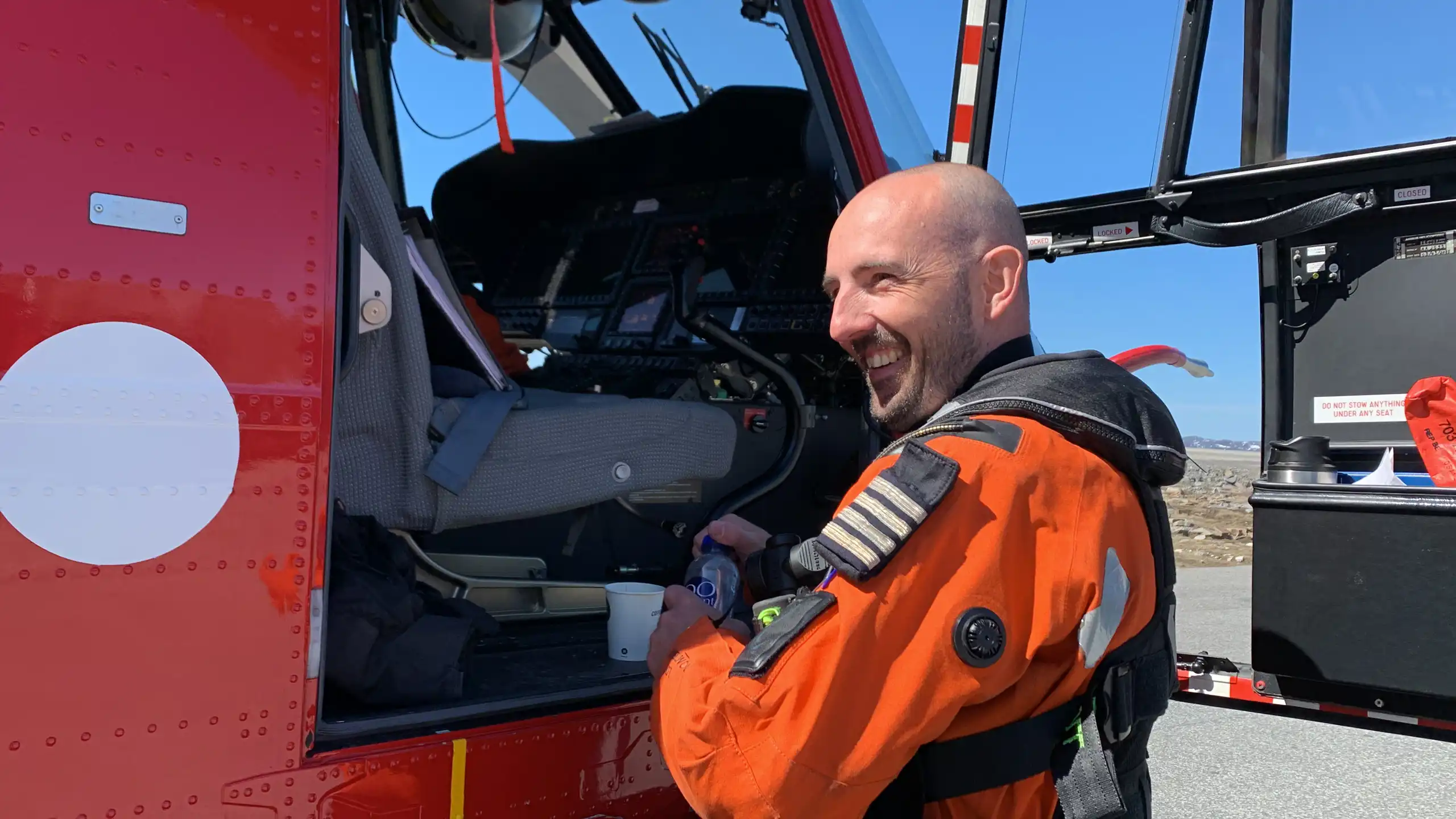
One of the captains on H225, Simon Dupont
The rescue helicopter is equipped with a Flight Management System, which includes navigation. Based on the last GPS point, the equipment can create a search pattern in the area. But in this case, finding the boat was easy.
- If only everyone had a GPS emergency transmitter or VHF radio, our searches would go much faster. In this case, the man had a VHF radio which allowed us to get in touch and he could guide us on. We saw his boat 20-35 metres from an iceberg not far from the first reported position, says Simon Dupont
The crew prepares for action, which in this case, involves hoisting the man from the boat. One of the hoist operators Aima Jensen sends down her colleague Dolfi Lund, but it doesn't go as planned.
- We "hang" in the air above the boat at about 150 feet, (about 45 meters altitude) but the wind from the helicopter pushes the boat away, making it harder for us to reach the boat. So we have to raise ourselves up to about 170 feet but that also means we have to stabilise the hoist (the line that is hoisted up and down, ed.) So we decide to get Dolfi down into the sea, says Simon Dupont.
This is the first time in Air Greenland's history that a hoist operator has been allowed into the sea, but the decision means that the hoist is not swinging back and forth. This is only possible because the pilots and hoist operators in the cabin have trained for this.
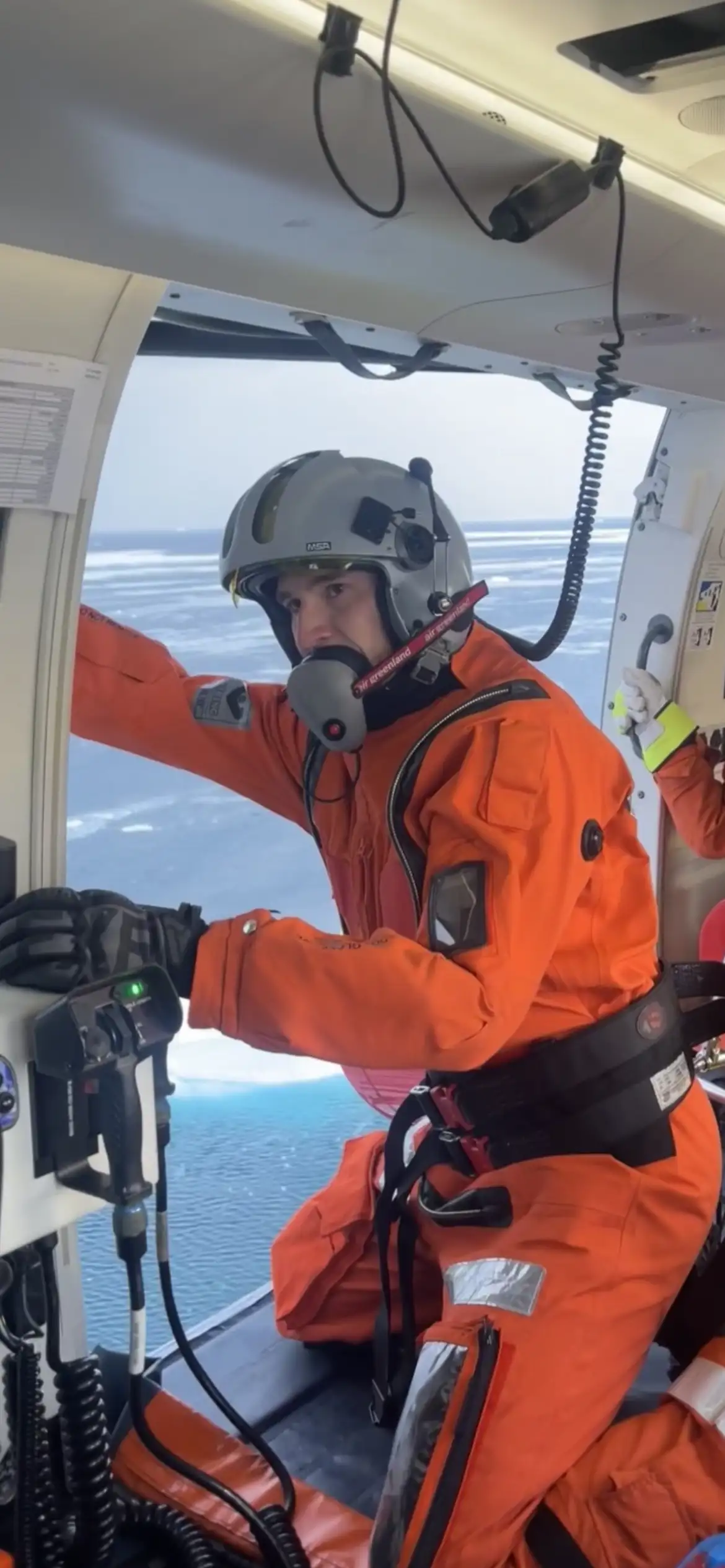
- Dolfi has sunk with his legs into the sea and we pull him towards the boat From there he can get on board, from where we can perform a double hoist. Dolfi sees to it that the man is fitted with hoist equipment, after which Aima hoists them both into the helicopter cabin. The operation takes about 10-15 minutes from the time we spot the dinghy until he's on board, explains the captain.
Then the helicopter flies towards Qaarsut and spots a larger ship heading out of the fjord towards the position. The other units assigned to the task get the message that the man has been rescued.
- We fly to Qaarsut to refuel and talk to the man in distress, who turns out to be from Ilulissat. Since we are going that way anyway, we drop him off there before flying back to our base in Kangerlussuaq. We landed there at 13.11, concludes Captain Simon Dupont.
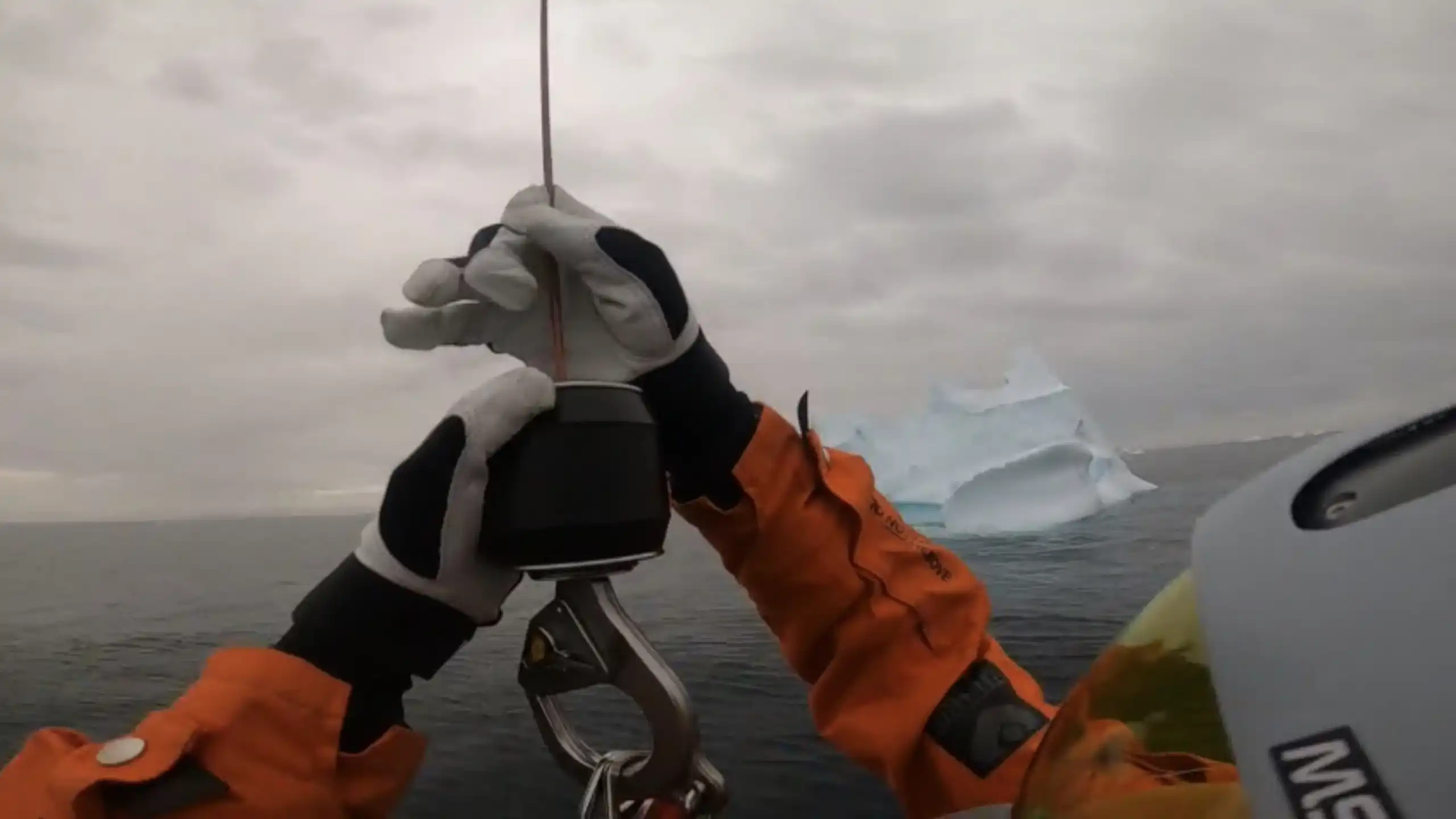
Dolfi Lund is hoisted

Aima Jensen operates the hoist
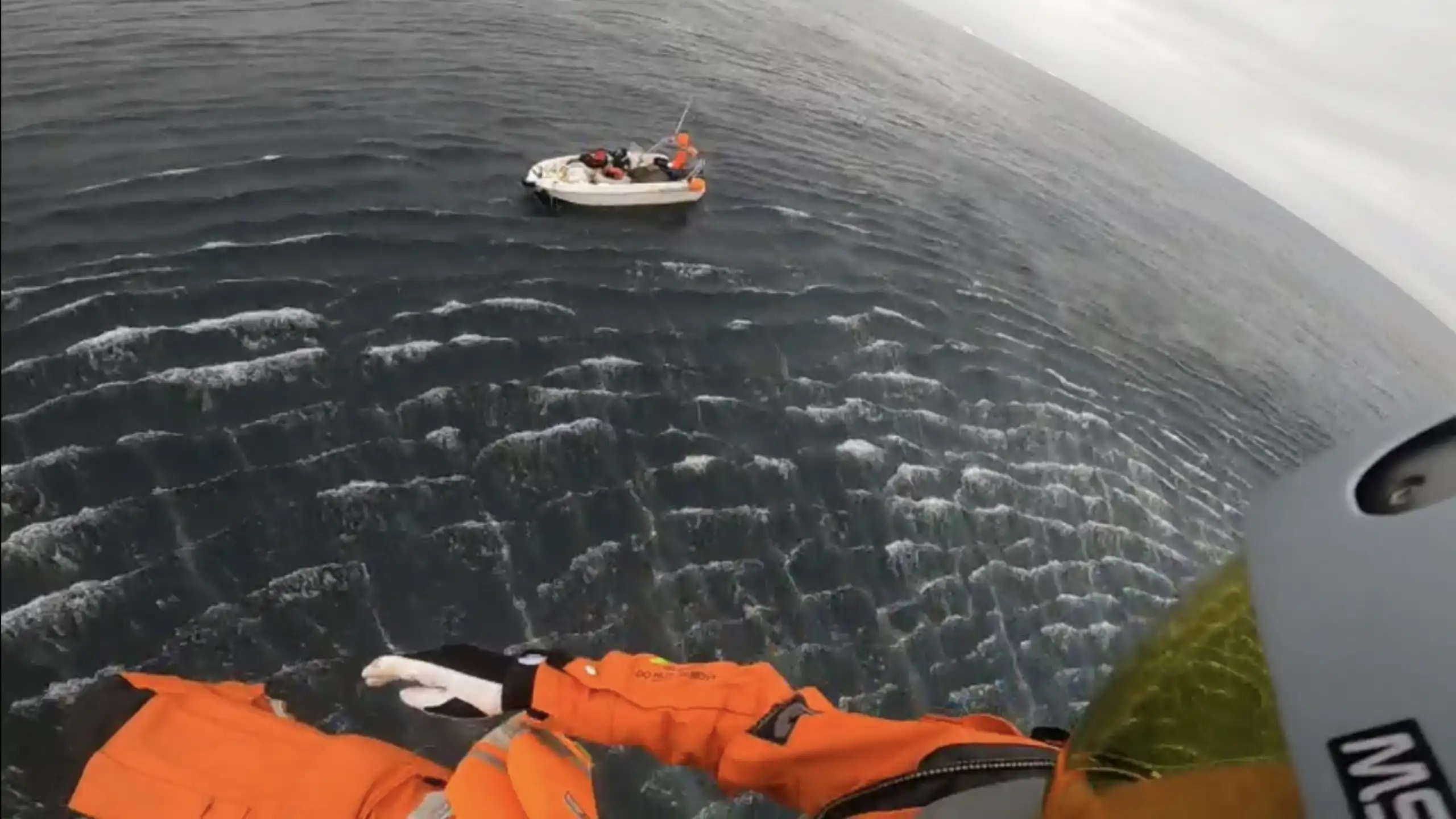
The wind pushes the boat away
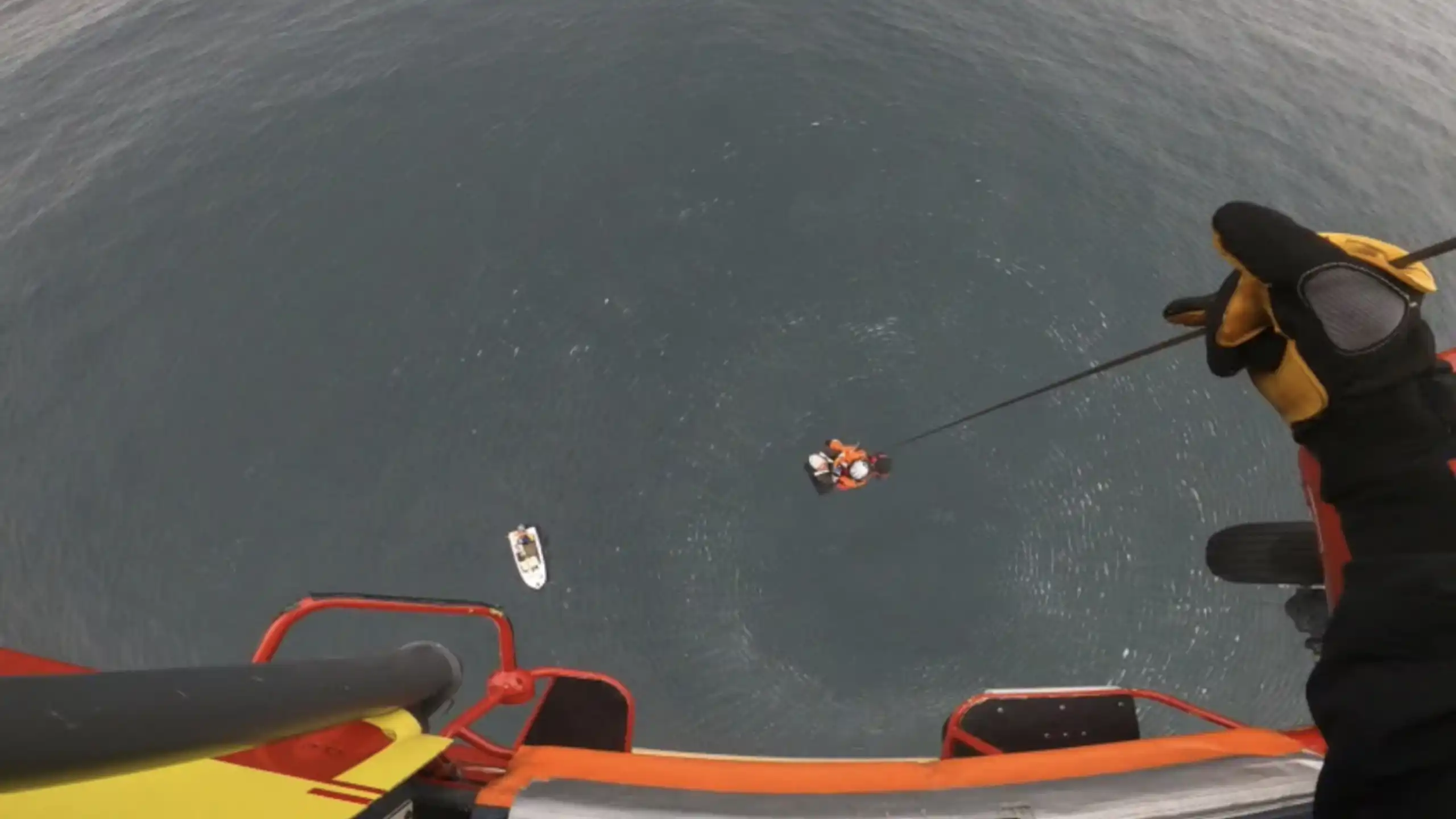
Dolfi Lund and the man from the boat get hoisted up
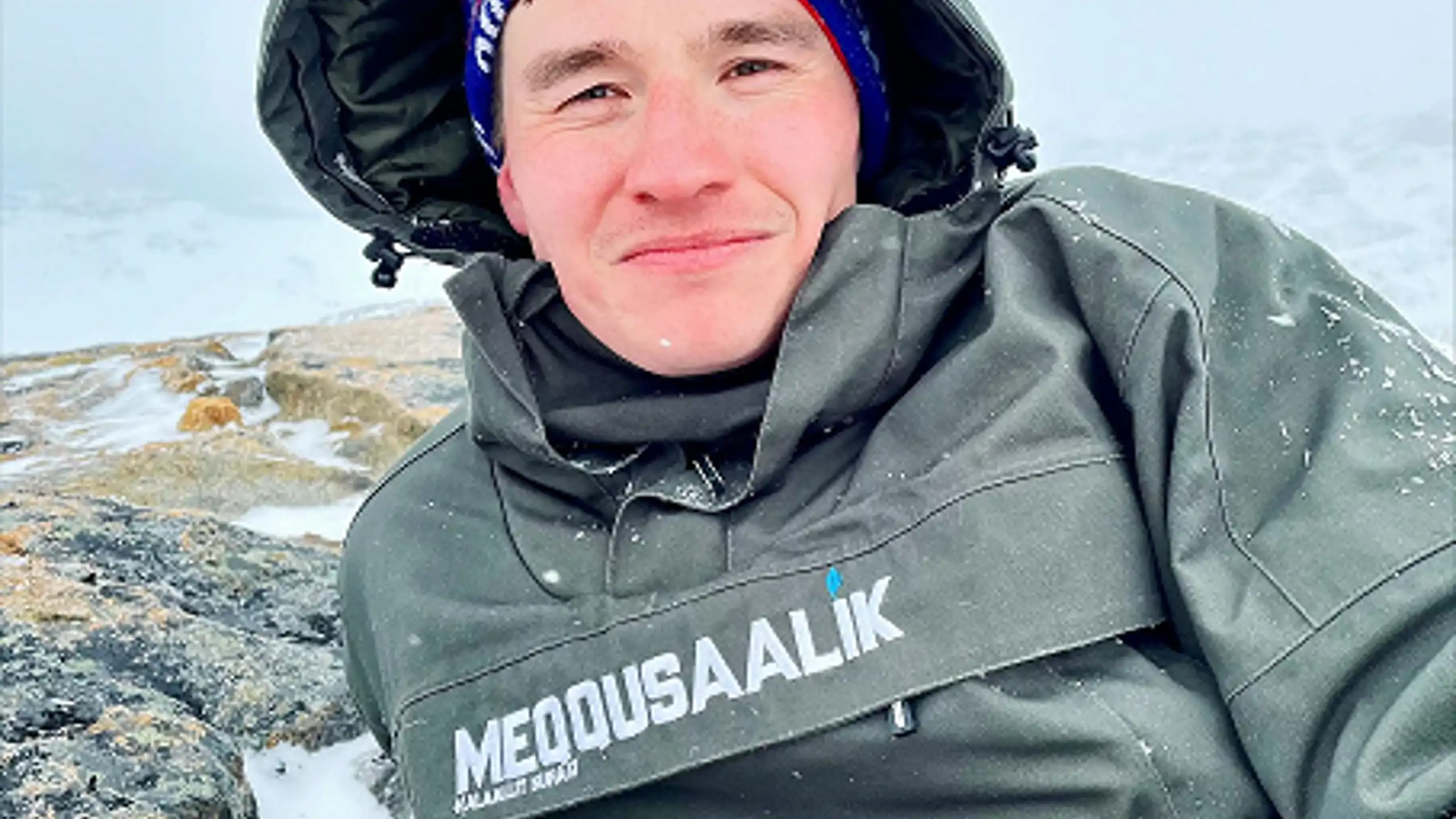
Dolfi Lund is a hoistoperator in Air Greenland
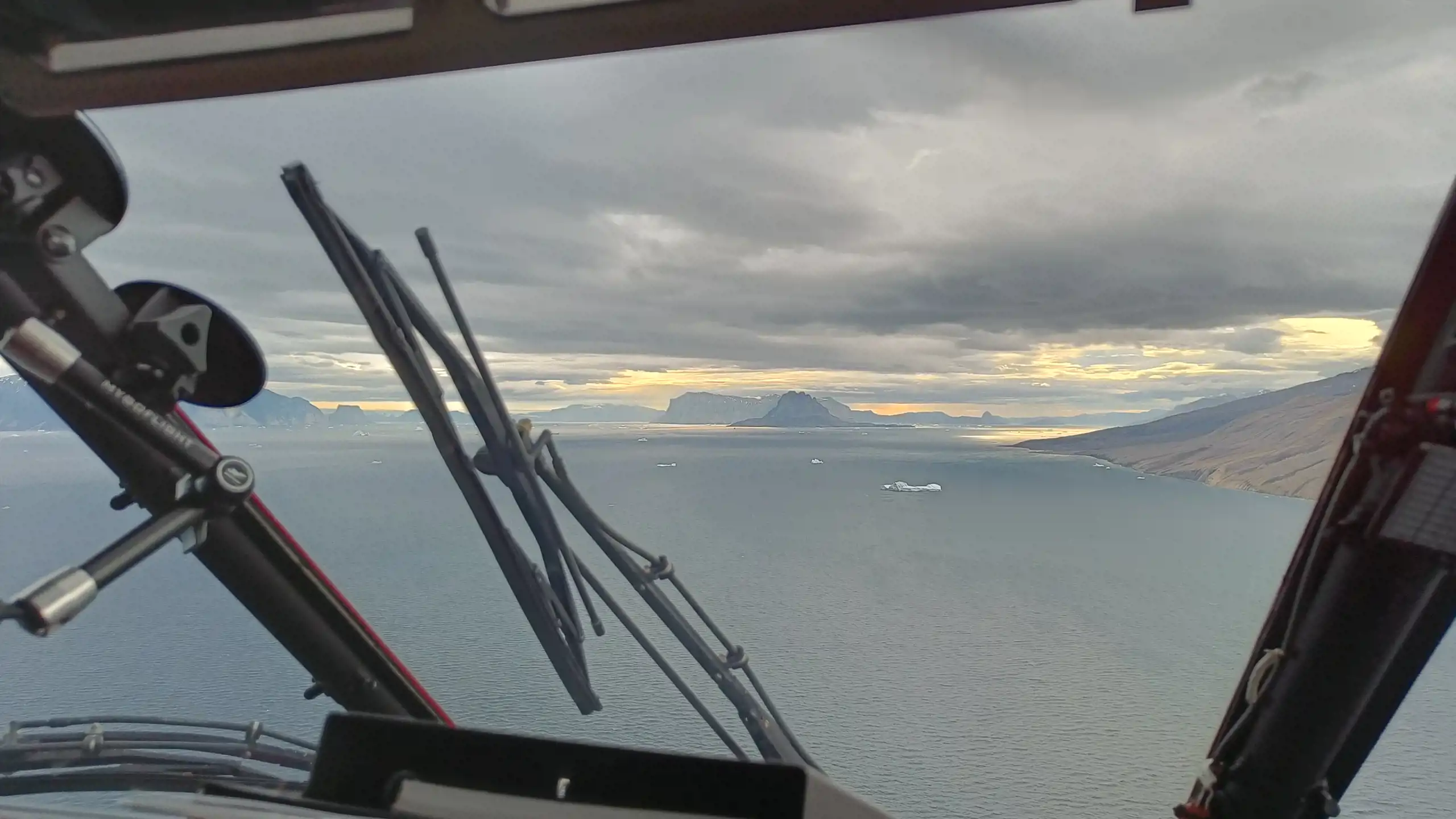
Here is the view from H225 on Monday 5 September during the rescue operation in Uummannaq fjord, with the distinctive Uummannaq mountain visible on the horizon.

